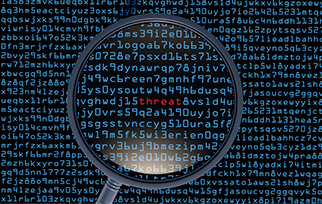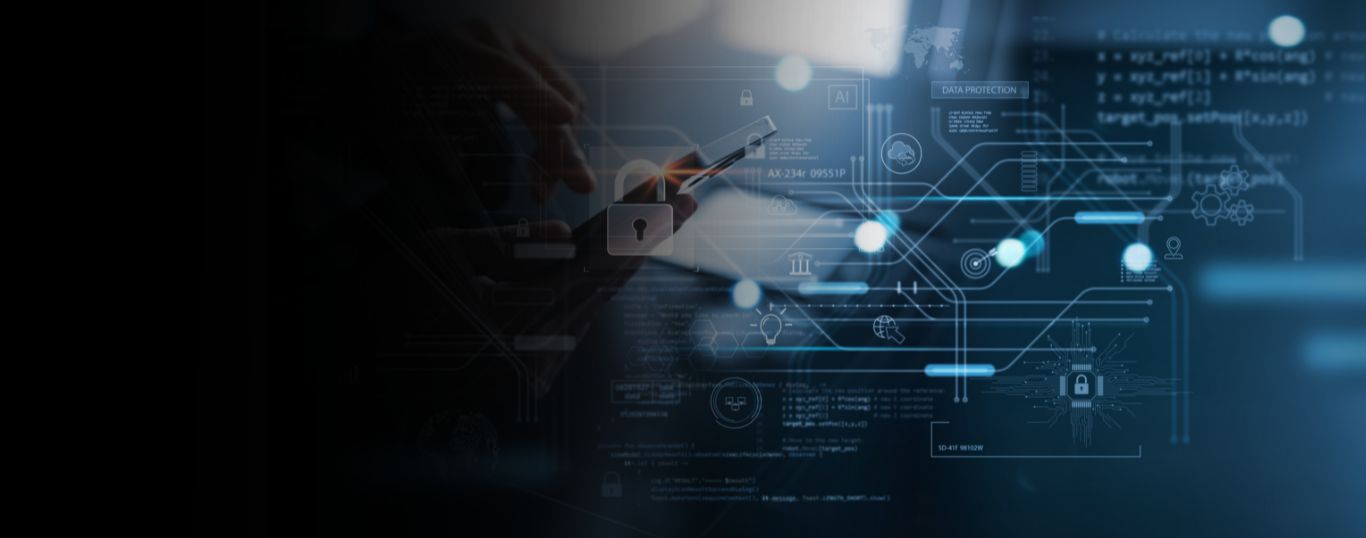To safeguard against dangers such as credential theft and the improper use of privileges, organizations employ privileged access management (PAM). This technique encompasses a holistic cybersecurity approach that includes personnel, processes, and technology. All of these are aimed at managing, watching over, safeguarding, and auditing both human and automated privileged identities and their associated actions throughout the IT framework.
Also called privileged identity management (PIM) or privileged access security (PAS), PAM ensures that individuals have only the essential access necessary to fulfill their duties. This way of adopting least privilege is recognized as a top cybersecurity practice and serves as a crucial measure in safeguarding sensitive data and resources from unauthorized access.
Through the enforcement of this principle, companies better equip themselves to decrease their vulnerability to attacks and protect against potential data breaches caused by either internal threats or external cyber-attacks.
Some Examples of Privileged Access
With the expansion of interconnected systems such as applications, machine-to-machine accounts, cloud and hybrid environments, and the integration of DevOps, robotic process automation, and IoT devices, the risk surface for privilege-based attacks is rapidly expanding.
Attackers are aware and exploit this by targeting privileged access. It is estimated that virtually all sophisticated attacks involve the abuse of privileged credentials to penetrate deeply into the most critical data, applications, and infrastructure of a target. Here are some examples of privileged access management used by organizations.
- Super User Account- This account is mainly utilized by IT system administrators. It allows for system or application adjustments, and the ability to add or remove users, or erase data.
- Local Administrative Account: Positioned within an individual workstation, this account requires a username and password for access. It facilitates changes and access to local machines or devices.
- Domain Administrative Account: This account offers privileged administrative powers throughout every workstation and server in a network domain. Although these accounts are limited in number, they deliver the broadest and most solid access within the network.
- Secure Socket Shell (SSH) Key: Used by PAM solution providers, SSH is a prevalent access control mechanism that grants comprehensive root access to essential systems. Root is the default account or username which has permissions for all commands and files on Linux or similar Unix-based operating systems.
- Privileged Business User: This refers to a non-IT professional who requires access to sensitive systems, possibly within finance, human resources (HR), or marketing departments.
- Emergency Account: Known also as a firecall or break glass account, this provides administrative access to secure systems during emergencies.
- Application Account: This type of account is dedicated to the application software, generally employed for administering, configuring, or managing the software’s access.
- Service Account: Used by an application or service, this account permits interaction with the operating system, enabling services to modify the system or its settings.
The Importance of Privileged Access Management (PAM) in Your Organization
Individuals often represent the most significant risk factor. This vulnerability can stem from internal staff members who exploit their heightened access rights or external cyber adversaries who pilfer such privileges to covertly navigate systems as if they were internal users.
Such human elements consistently pose the largest threat within the cybersecurity framework. Privileged access management solutions are essential as it ensures individuals are granted just enough access to successfully carry out their professional duties. Moreover, PAM supports security teams in pinpointing and promptly addressing any malicious activities associated with the misuse of privileges, thereby mitigating risks.
Cyber adversaries frequently target endpoint devices like laptops, smartphones, tablets, desktops, and servers, which inherently possess privileged access. Default administrator accounts, while essential for IT staff to address local issues, also pose significant risks.
These admin accounts can be hijacked by attackers who may then navigate from one workstation to another, escalating their access rights and moving laterally across the network to locate their targets. An effective PAM strategy includes the thorough elimination of local admin rights on such devices to minimize these risks.
PAM security plays a pivotal role in compliance achievement. Monitoring and identifying suspicious activities is crucial, yet focusing exclusively on mitigating the highest risks those stemming from poorly managed, unmonitored, and unprotected privileged accesses is vital.
The integration of PAM into a broader security and risk management framework allows organizations to document and track all pertinent activities related to critical IT assets and sensitive data, thus facilitating the simplification of audit and compliance processes.
Risks Associated with Unmanaged Privileged Access
Unmanaged or poorly managed privileged access presents several risks:
- Security Breaches and Data Leaks: Without proper management, privileged accounts can be exploited to access sensitive information, potentially leading to data breaches.
- Operational Disruption: Unauthorized changes to system configurations could disrupt operations, causing financial and reputational damage.
- Compliance Violations: Failure to control privileged access can result in violations of compliance mandates, leading to fines and penalties.
These risks accentuate the need for robust privileged access management protocols within organizations.

An effective PAM solution consists of several key components:
- Password Vaulting
All PAM systems are designed to obscure actual passwords of vital systems and resources from privileged users. This detachment prevents any direct attempts to manually manipulate a physical device. Rather than distributing passwords directly to privileged operators, these systems should safely store the credentials in a secured vault.
- Real-Time Visibility and Alerting
Whenever a security threat is identified, immediate preventative measures require execution. An efficient PAM solution facilitates the rapid creation of alerts and addresses any activity that deviates from typical account usage promptly.
- Multi-Factor Authentication
Despite numerous security measures, privileged accounts are still vulnerable to breaches. To bolster security, privilege access management tools should incorporate additional verification layers using multi-factor authentication protocols (MAP). Integration of OATH authentication and proprietary tokens are also advisable as part of MAP.
- Access for Remote Employees and Third Parties
It is essential to merge identities across all operating systems and environments, whether on-premise or cloud-based, to accurately connect individuals with accounts. Remote employees should have access to systems and data just as they would within an office setting.
PAM software also needs to extend role-based access to system interfaces to third-party staff without requiring domain credentials.
- Mobile Access Points
As mobile devices increasingly become a standard method for accessing enterprise systems, it’s important for PAM software to work with secure application launchers to facilitate access from these remote devices.
- Session Management
The best privileged access management should initiate and manage sessions for every privileged user. There should be facilities to record every privileged session, whether conducted via command-line or video, in a manner that is thorough and searchable.
This capability aids in swiftly demonstrating compliance with various regulatory standards like SOC2, SOX, PCI DSS 3.2, HIPAA, NERC CIP, ISO 27001, and more.
Through live session monitoring, IT staff can observe these sessions in real-time.
- Password Management: Auto-Generation, Rotation, and Workflow Approval
Whenever a privileged user requests access, the PAM system should generate a new password to prevent reuse or exposure, ensuring these credentials are consistent with the assigned systems.
Access to particularly sensitive or important credentials should be granted only under strict policy compliance and after obtaining the necessary approvals.
- Disaster Recovery
PAM infrastructures should be constructed with redundant components to eliminate any single point of failure that could disrupt critical system access during extensive network or power outages.
-
Auditing and Reporting
Effective privileged access management solutions should provide risk-based evaluations that detail access permissions to resources, helping to streamline audit and compliance processes.
Implementing Privileged Access Management: Best Practices
- Strong password policies
- Multi-factor authentication
- Role-based access control
- System updates and patches
- Regular privileged access reviews
- Session monitoring and logging
- Security audits and assessments
- Zero Trust policies
Monitoring and Auditing Privileged Access Activities
Continual monitoring and auditing are vital to ensure the security of privileged access management systems. This real-time surveillance acts as a deterrent against misuse of privileged credentials.
These practices help in:
- Detecting possible security incidents in real time.
- Providing detailed logs and records that assist in forensic analysis.
- Ensuring that all privileged access is appropriate and authorized.
Automating, and Integrating Privileged Access Management Processes
Automation not only tightens security but also ensures a seamless administrative flow. Moreover, integrating PAM security with identity governance furthers an organization's ability to control and manage user access throughout its lifecycle in the company. This integration ensures that:
- Manage and rotate passwords automatically.
- Trigger alerts for any unauthorized or unusual activities.
- Simplify the process of tracking, auditing, and reviewing access logs.
- Access rights are consistently enforced and regularly reviewed.
- Users receive access appropriate to their current roles in the organization.
- There is a unified view of a user’s access across the network.
The Best Privileged Access Management Solution From Cybalt
Secure your enterprise and its critical data with Cybalt. Begin by managing Privileged Access effectively to halt unauthorized account or credentials breaches.
With Cyblat’s PAM solution, you can
- Track and review user sessions for any unusual activities
- Guard against credential leaks and protect vital assets
- Regularly update and manage access credentials.
- Address and correct high-risk actions automatically
- Enhance security for remote Privileged Access Management connections.
- Provide seamless and secure entry to corporate resources.
Contact us to start with the best privileged access management solution.
Other Blogs

From Nuclear Centrifuges To Machine Shops: Securing IoT
IoT or ‘the internet of things’ has been around for a lot longer than the buzzword
Read More


Demystifying XDR
As the capabilities of threat actors have increased so have the tools which we utilize to detect and respond to their activities.
Read More


Cybersecurity In A Post Pandemic World
As many cyber security practitioners will tell you, the most imminent and dangerous threat to any network are the employees accessing it.
Read More


